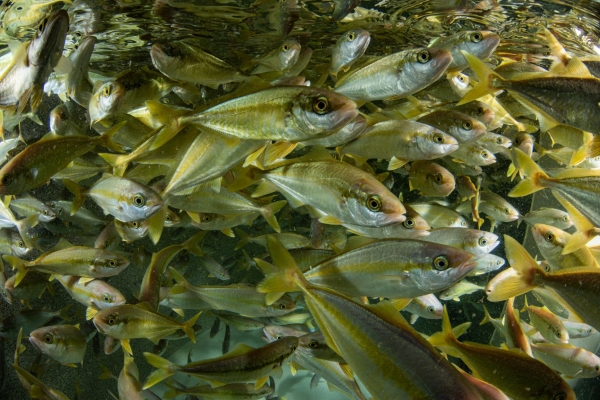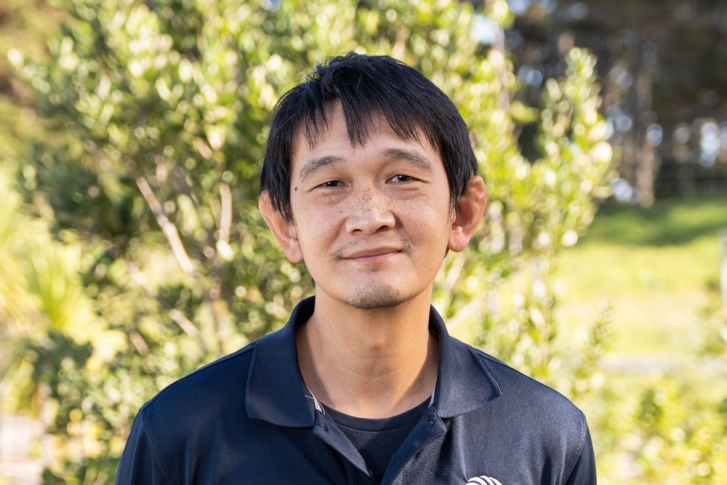On this page:
About this service
Under what captive conditions would fish continue to grow well and healthy so that a bountiful and attractive product can be harvested sustainably? How can a farmer predict how much the fish should eat and how much feed to order? What can be done if fish refuse to breed in captivity? How can we encourage mussel spat to remain attached to their lines? These are the relevant questions that aquafarmers grapple with constantly. Answering them relies on developing the understanding and the ability to control the functions of organs, tissues and biological systems, i.e., the physiology, of their crop products.
Even for well-established farmed species, research into their physiology are constantly being made to further improve production and welfare. Physiological research is particularly important when developing new species in aquaculture, for which basic information are still unknown. Hence, fish physiology is a vast discipline and core area of research for NIWA. We are actively conducting research in areas of energetics and growth physiology, fish health and welfare (stress physiology) and reproductive physiology. Recently, we have also turned our attention to understanding on how recirculating aquaculture systems (RAS) affect fish physiology.
Our services
Our team can assist you in all the stages of physiological research ranging from the design of experiments, running the trials, data collection, analyses and writing of reports. Our facilities allow us to conduct replicated trials under environmental control/manipulation (e.g., temperature, CO2, O2, etc) from benchtop scale through to multiple large tanks (e.g., 20,000 L) on a diverse range of species (algae, shellfish, finfish). By leveraging the wider NIWA capabilities, we are able to incorporate biochemical or molecular analyses into the workflow. This range of facilities and expertise enable a wide range of bespoke trials to fit your research requirements.
Our facilities
- Photothermally-controlled replicated trial tanks with the ability to manipulate water chemistry (e.g., salinity, O2, CO2, pH, etc). This system can be configured as production feed trial unit containing forty-two, 1,500 L, round tanks divided across three rooms (18, 12 and 12 tanks respectively).
- Temperature-controlled larval and early juvenile trial system comprising of 12 x 1,500 L, 8 x 5,000 L and 6 x 10,000 L tanks.
- Photothermally-controlled RAS trial tanks at medium scale (6 x 5,000 L). We will soon commission large scale (6 x 25,000 L) tanks configurable as RAS or flow-through.
- Metabolic chamber to measure respiration of animals under controlled environmental conditions (i.e. temperature, salinity, O2, CO2, pH, flows) and measure the quantity and quality of discharge using particle sizing, capture and analysis. See also the Physiology section.
- Portable x-ray machine.
- Molecular biology laboratory (NIWA Wellington) and expertise.
- Gas chromatography mass spectrometry (GC-MS; NIWA Auckland).
Our expertise
- Comparative physiology studies in a range of controlled rearing environment (e.g., photoperiod, temperature, water chemistry), manipulation (e.g., hormonal manipulation, behavioural and metabolic stressors) and life stages.
- Energetics/metabolic physiology and growth.
- Reproductive control of broodstock.
- Implications of RAS conditions on fish health, welfare and performance.
Selected track record
Environmental tolerances and fish welfare
Our research have shown that kingfish are highly tolerant of conditions commonly encountered in RAS. They maintain robust health and growth rates at 20 ppm CO2 and elevated ammonia. These types of research are important to evaluate if kingfish is a good candidate for land-based RAS farming.Tank experiments have shown that hāpuku juveniles survive well in areas with peak sea temperatures of 22°C, but have significantly lower growth compared to those kept in constant 18°C.
Reproductive control
We have developed an effective protocol of hormonal induction of spawning in hāpuku, kingfish and snapper. We have also conducted basic research to understand the sexual maturation (pubertal) process of hāpuku, describing the corresponding changes in sex steroid levels and ovarian development. This research showed that hāpuku are able to spawn at 5 years old but are not fully reproductively competent until 8 years old and determined the specific environmental cues for spawning to occur.
Energetics and growth
Our research on the growth and metabolic physiology of hāpuku and yellowtail kingfish have shown their optimal temperature for growth and feed conversion. By conducting growth trials at various temperatures and life stages, we have developed the thermal growth coefficients for hāpuku and kingfish; a critical information for farm design and management.


